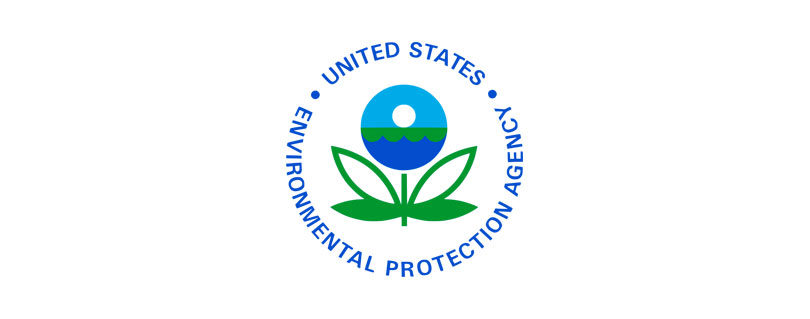EPA to Review Cleanups at 45 Southeast Superfund Sites
Publilshed by the U.S. Environmental Protection Agency (EPA)
ATLANTA (Oct. 19, 2022) – Today, the U.S. Environmental Protection Agency (EPA) announced that comprehensive reviews will be conducted of completed cleanup work at 45 National Priority List (NPL) Superfund sites in the Southeast.
The sites, located in Alabama, Florida, Georgia, Kentucky, Mississippi, North Carolina, South Carolina, and Tennessee, will undergo a legally required Five-Year Review to ensure that previous remediation efforts at the sites continue to protect public health and the environment.
“The Southeast Region will benefit tremendously from the full restoration of Superfund sites, which can become valuable parts of the community landscape,” said EPA Region 4 Administrator Daniel Blackmon. “The Five-Year Review evaluations ensure that remedies put in place to protect public health remain effective over time.”
The Superfund Sites where EPA will conduct Five-Year Reviews in 2022 are listed below. The web links provide detailed information on site status as well as past assessment and cleanup activity. Once the Five-Year Review is complete, its findings will be posted in a final report at https://www.epa.gov/superfund/search-superfund-five-year-reviews.
Alabama
Alabama Army Ammunition Plant https://www.epa.gov/superfund/alabama-army-ammunition-plant
Alabama Plating Company, Inc. https://www.epa.gov/superfund/alabama-plating-co
Mowbray Engineering Co. https://www.epa.gov/superfund/mowbray-engineering
US NASA Marshall Space Flight Center
US Army/NASA Redstone Arsenal https://www.epa.gov/superfund/redstone-aresenal
Florida
ALARIC Area GW Plume https://www.epa.gov/superfund/alaric-area-groundwater-plume
Beulah Landfill https://www.epa.gov/superfund/beulah-landfill
Chevron Chemical Co. (Ortho Division) https://www.epa.gov/superfund/chevron-chemical-company
Florida Petroleum Reprocessors https://www.epa.gov/superfund/florida-petroleum-reprocessors
Miami Drum Services https://www.epa.gov/superfund/miami-drum-services
Pensacola Naval Air Station https://www.epa.gov/superfund/naval-air-station-pensacola
Raleigh Street Dump https://www.epa.gov/superfund/raleigh-street-dump
Taylor Road Landfill https://www.epa.gov/superfund/taylor-road-landfill
Tower Chemical Co. https://www.epa.gov/superfund/tower-chemical-company
Georgia
Alternate Energy Resources Inc. https://www.epa.gov/superfund/alternate-energy-resources
Peach Orchard & Nutrition Co. Rd PCE Groundwater Plume Site https://www.epa.gov/superfund/peach-orchard-road-pce-plume
Powersville Site https://www.epa.gov/superfund/powersville-site
T.H. Agriculture & Nutrition Co (Albany Plant) https://www.epa.gov/superfund/t-h-agriculture
Kentucky
A.L. Taylor (Valley of the Drums) https://www.epa.gov/superfund/al-taylor-valley-of-drums
Brantley Landfill https://www.epa.gov/superfund/brantley-landfill
Distler Brickyard https://www.epa.gov/superfund/distler-brickyard
Distler Farm https://www.epa.gov/superfun https://www.epa.gov/superfund/lee-lane-landfilld/distler-farm
Lee’s Lane Landfill https://www.epa.gov/superfund/lee-lane-landfill
National Electric Coil Co./Cooper Industries https://www.epa.gov/superfund/national-electric-coil-cooper-industries
Tri City Disposal Co. https://www.epa.gov/superfund/tri-city-disposal
North Carolina
ABC One Hour Cleaners https://www.epa.gov/superfund/abc-one-hour-cleaners
Aberdeen Pesticide Dumps https://www.epa.gov/superfund/aberdeen-contaminated-groundwater
Benfield Industries, Inc. https://www.epa.gov/superfund/benfield-industries
Cherry Point Marine Corps Air Station https://www.epa.gov/superfund/cherry-point-marine-corps
CTS of Ashville, Inc. https://www.epa.gov/superfund/cts-millsgap
GEIGY Chemical Corp (Aberdeen Plant) https://www.epa.gov/superfund/ciba-geigy-corporation
Gurley Pesticide Burial https://www.epa.gov/superfund/gurley-pesticide-burial
North Carolina State University (Lot 86, Farm Unit #1) https://www.epa.gov/superfund/north-carolina-state-university
Sigmon’s Septic Tank Service https://www.epa.gov/superfund/sigmon-septic-tank
South Carolina
Admiral Home Appliances https://www.epa.gov/superfund/admiral-home-appliances
Beaunit Corp (Circular Knit & Dyeing Plant) https://www.epa.gov/superfund/beaunit
Carolawn Inc. https://www.epa.gov/superfund/carolawn
Elmore Waste Disposal https://www.epa.gov/superfund/elmore-waste-disposal
International Minerals and Chemicals (IMC) https://www.epa.gov/superfund/imc
Kalama Specialty Chemicals https://www.epa.gov/superfund/kalama-specialty-chemicals
Koppers Company, Inc. (Charleston Plant) https://www.epa.gov/superfund/koppers-charleston-plant
Savannah River Site (USDOE) https://www.epa.gov/superfund/savannah-river-site
SCRDI Bluff Road https://www.epa.gov/superfund/scrdi-dixiana
Tennessee
Mallory Capacitor Co. https://www.epa.gov/superfund/mallory-capacitor
Memphis Defense Depot (DLA) https://www.epa.gov/superfund/memphis-defense-depot
Background
Throughout the process of designing and constructing a cleanup at a hazardous waste site, EPA’s primary goal is to make sure the remedy will be protective of public health and the environment. At many sites, where the remedy has been constructed, EPA continues to ensure it remains protective by requiring reviews of cleanups every five years. It is important for EPA to regularly check on these sites to ensure the remedy is working properly. These reviews identify issues (if any) that may affect the protectiveness of the completed remedy and, if necessary, recommend action(s) necessary to address them.
There are many phases of the Superfund cleanup process including considering future use and redevelopment at sites and conducting post cleanup monitoring of sites. EPA must ensure the remedy is protective of public health and the environment and any redevelopment will uphold the protectiveness of the remedy into the future.
The Superfund program, a federal program established by Congress in 1980, investigates and cleans up the most complex, uncontrolled or abandoned hazardous waste sites in the country and endeavors to facilitate activities to return them to productive use. In total, there are more than 280 Superfund sites across the Southeast.
More information:
EPA’s Superfund program: https://www.epa.gov/superfund
Read the full article at: https://www.epa.gov/newsreleases/epa-review-cleanups-45-southeast-superfund-sites


